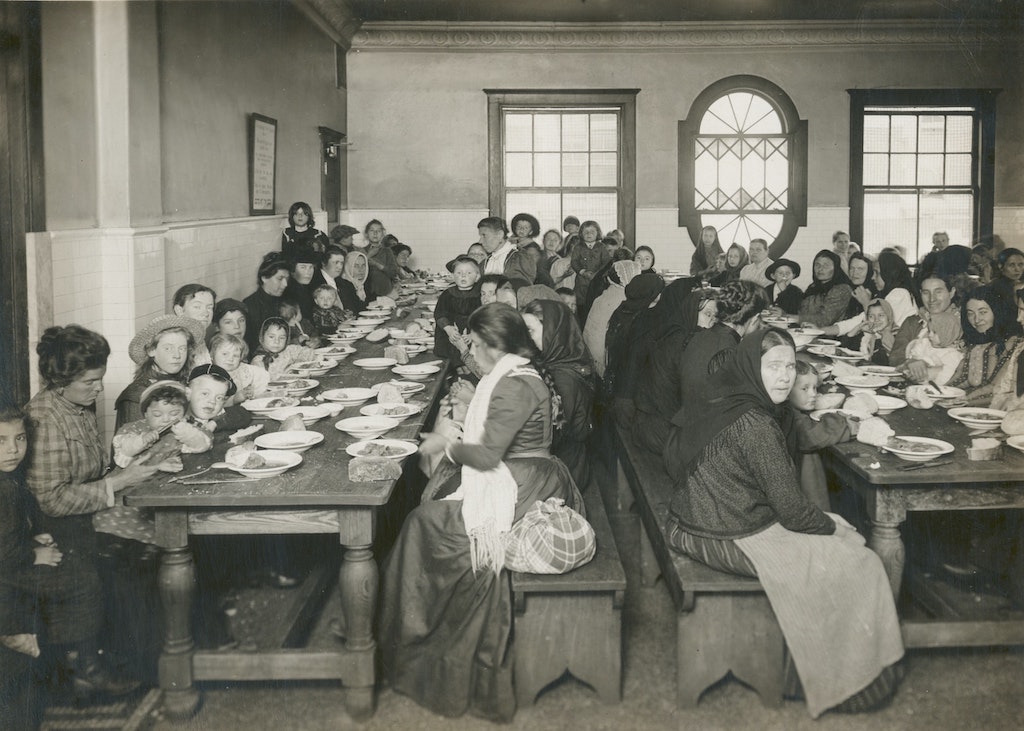Here are the key events which have shaped the United States’ long history of immigration.
Among the defining characteristics of the United States is its racial and ethnic diversity, thanks to various events of immigration which have been occurring since its birth.
To better understand the movement of people to the United States over the past two centuries, Metrocosm created an animated immigration map which can be seen above.
The reception towards immigrants has been varied through time. Even today, this matter is a source of intense discussions. Here, we revisit some of the key events in the United States’ history of immigration.
The early days
The first major surge of immigration in the 1700s happened upon the passage of The Naturalization Act of 1790. This allows any free white person of “good character” who has been in the country for at least two years to apply for citizenship.
This made the English the largest ethnic group in the U.S. by 1790. However, this also denied the nonwhites basic rights like suffrage, property ownership, and to testify in court.
Major settlements in the 1800s
Another surge began in 1815 when peace was established between the U.S. and Britain following the War of 1812. Between 1820 and 1860, millions of Irish and German immigrants came to the U.S.
The rise of German and Irish immigrants eventually led to the formation of the first anti-immigrant political party — the Know-Nothing Party — in the U.S.
Around the 1850s, a surge of Chinese workers entered America. Anti-Chinese sentiment grew as white workers started blaming them for low wages.
Eventually, the Chinese Exclusion Act of 1882 was passed, preventing the entry of Chinese immigrants to the U.S., making it the first law to exclude a specific immigrant group. Later on, the Immigration Act of 1891 expanded the restrictions to polygamists, those convicted of crimes, and the sick.
Nearing the end of the 1800s, Ellis Island was opened. This is the first immigration station in the U.S.

Early 1900s: Systemic shifts and the onset of war
The opening of Ellis island brought in 12 million immigrants between 1892 and 1954, this peaked in 1907 when 1.3 million entered the U.S. through the island alone.
Before the start of the first world war, xenophobia has intensified in the U.S. This prompted the passage of Immigration Act of 1917 which imposed a literacy requirement and barred immigration for the majority of Asian countries.
Restrictions were further intensified through the Immigration Act of 1924 which imposed yearly quotas on immigration and completely excluded immigration from Asia — save for the Philippines which was an American colony at the time.
Late 1900s: More changes during the second world war
The Bracero Program was introduced in 1942 to allow the entry of Mexican agricultural workers until 1964 in order to resolve the labour shortages during the second world war. There were several waves of immigration which also happened during this period.
In 1948, the first refugee and resettlement law was passed to respond to the spike in Europeans desiring permanent residence after the war. In 1952, McCarran-Walter Act lifted the restriction on Asian immigrants. Lastly, over three million refugees were also admitted by the U.S. during the Cold War.
Modern era: The end of the quota system
The Immigration and Nationality Act of 1965 lifted the racially-biased quotas imposed in the 1920s and were replaced by a seven-category preference system which focused on family reunification and skilled immigrants.
Meanwhile, the Simpson-Mazzoli Act of 1986 granted amnesty to more than three million illegal immigrants in the U.S.
In 2001, The first iteration of the Development, Relief and Education of Alien Minors (DREAM) Act was created. DREAM provides a citizenship pathway for undocumented immigrants brought to the U.S. illegally by their parents as children, known as Dreamers. However, none of the multiple attempts to introduce the act gained approval in Congress.
In 2012, President Barack Obama signed the Deferred Action for Childhood Arrivals (DACA) which provides protections to Dreamers but does not grant them pathways to citizenship.
In 2017, President Trump issued two executive orders both named “Protecting the Nation from Foreign Terrorist Entry into the United States,” which restricted travel on six majority Muslim countries (Chad, Iran, Libya, Syria, Yemen, Somalia) along with North Korea and Venezuela. A subsequent version lifted the travel restrictions on Chad.
Uprooting
To see the different waves of immigration from a different perspective, Insightful Interaction constructed this illustration depicting U.S. immigration from 1820 to 2015:

Throughout the history of the U.S., we can see that the racially-biased view of immigration is deeply entrenched. Even in the world today, the rejection of the country’s diversity in favour of one race remains evident.
Left untouched, this view will perpetuate a never-ending cycle which will continue to oppress and take innocent lives.
It may be long overdue but this year, the people are in the streets, calling for the end of this cycle. Undoubtedly, to uproot this faulty view which discriminates based on one’s race or the colour of their skin will take sweeping changes. None of these changes will happen, however, if we continually refuse to start.
Reference
U.S. Immigration Timeline (2018, December 21). Retrieved June 11, 2020 from https://www.history.com/topics/immigration/immigration-united-states-timeline










